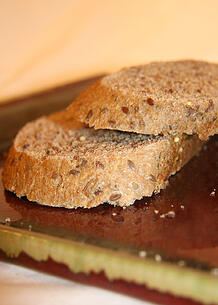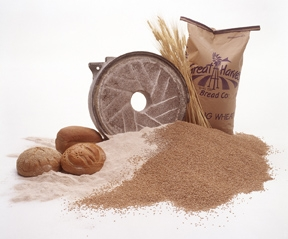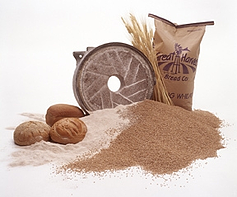How can you tell if what you are eating is whole grain? If you’re thinking it is as simple as
 looking for the words ‘whole grain’ or ‘whole wheat’ on the front of the package you better think again. Currently, the FDA has not defined any claims describing the grain content of foods. This means that although they recommend that a product bearing such a claim is predominately whole grain, they do not enforce it. This can make shopping a bit tricky if you are striving for the most nutritious products to bring home to your family.
looking for the words ‘whole grain’ or ‘whole wheat’ on the front of the package you better think again. Currently, the FDA has not defined any claims describing the grain content of foods. This means that although they recommend that a product bearing such a claim is predominately whole grain, they do not enforce it. This can make shopping a bit tricky if you are striving for the most nutritious products to bring home to your family.
Fortunately there is a simple way to crack the code. Take a look at the ingredient statement! This lists ingredients in descending order of predominance, meaning the first ingredient listed accounts for the most weight in the product while the last ingredient accounts for the least weight of the product. With this in mind, glance through ingredient statements and look for a whole grain as one of the first listed to determine if a product is primarily whole grain.
Take a look at the chart below to see what you should be keeping an eye out for. Just like fruits and veggies, the fresher they are, the better tasting and more nutritious they are for you as neither flavor nor nutrient content has yet deteriorated. Freshly milled whole grains like ours are a great option to get that rich nutty whole grain bread, muffin, bar, or cereal you are looking for!
What the label might say |
What this actually tells you |
|
These are guaranteed to be Whole Grains! This means these ingredients contain all three parts of the grain so you're getting all the nutrients and health benefits the grain has to offer! These ingredients should be listed as the first or one of the first ingredients in an ingredient statement to indicate a predominately whole grain food item.
|
|
When you see these items on an ingredient list, they are almost always in the whole form. If you’re still hesitant, check for the word ‘whole’ in front of the ingredient statement or talk to the supplier to find out if they are in fact in the whole form! |
|
These are not guaranteed to be whole grains. They shouldn’t be high up on the list of ingredients. If they are, the product is most likely a predominately refined grain product. |
References:
Draft Guidance: U.S, Food and Drug Administration. Draft Guidance: Whole Grain Label Statements. Accessed Feb 2012.
Chart adapted from The Whole Grains Council's Identifying Whole Grain Products. Acessed Feb 2012.






